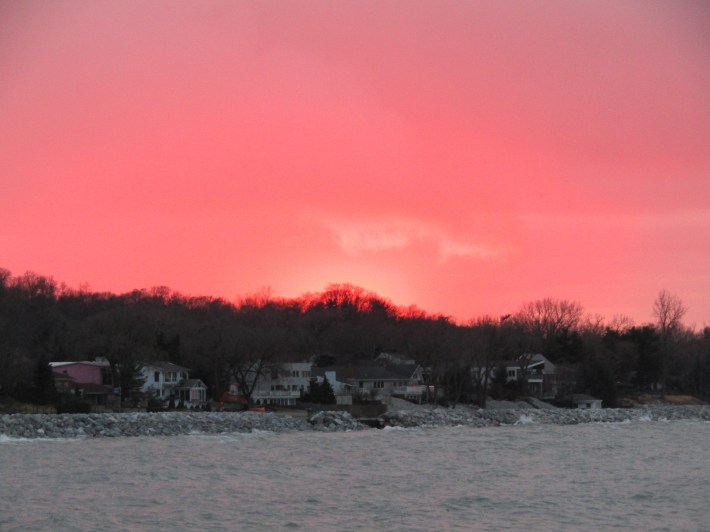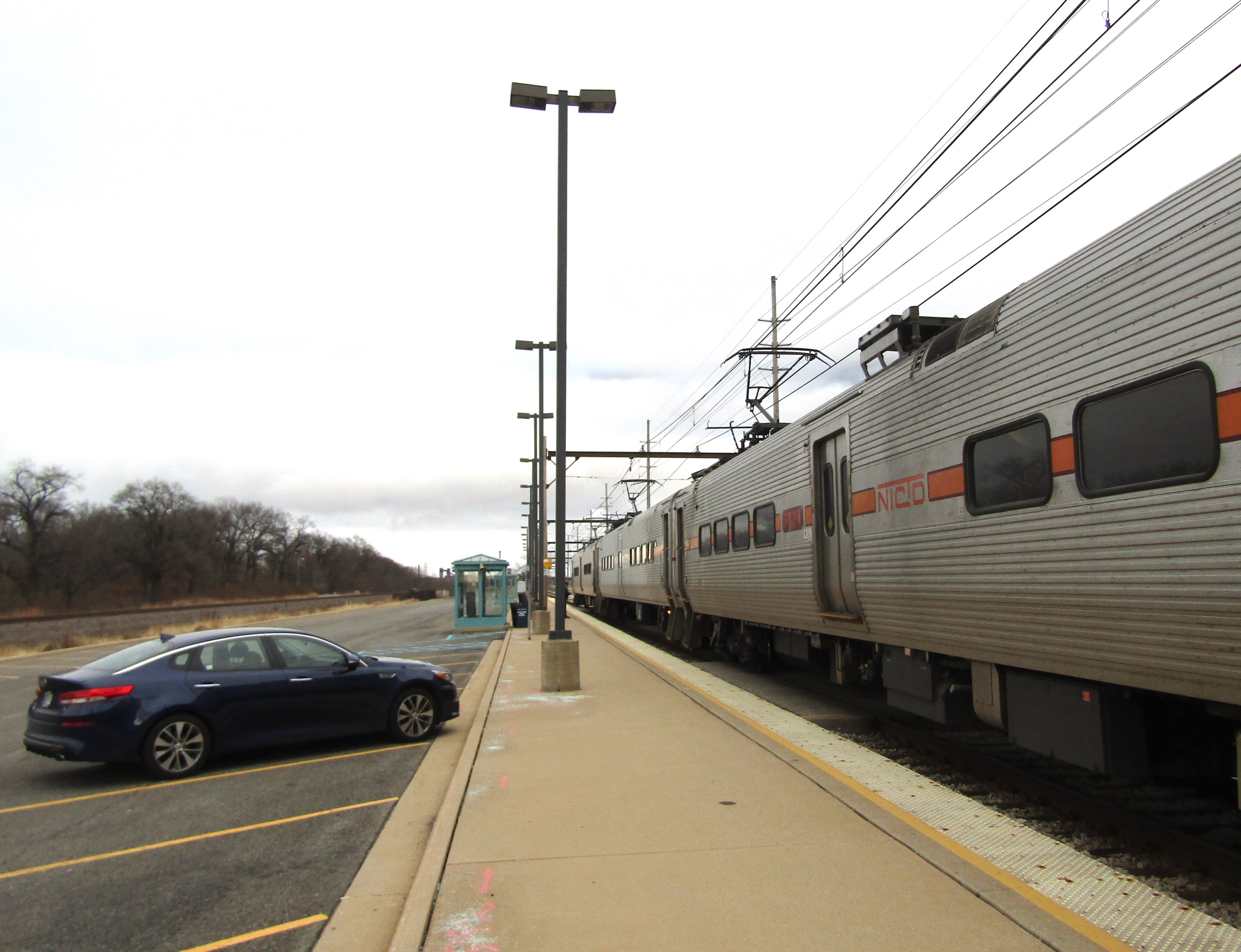As the South Shore Line embarks on two major projects – building the new West Lake branch and restoring a second track between Gary and Michigan City, Indiana – the Northwest Indiana Regional Development Authority is working to to ensure the surrounding communities get money for transit-orientated development.
In 2017, the Indiana state legislature authorized a new kind of taxing districts – the Transit Development Districts to aid development around the South Shore Line. Similar to Tax Increment Financing districts, they would capture the increase in property tax revenue in zones around new projects, although unlike Chicago's TIFs, they also capture the increase in local income tax revenue. As the name suggests, they can only be set up around transit stations, occupying no more than 0.5 square miles (320 Acres) of the surrounding land.
The regional development authority is planning to establish TDDs around all the future West Lake Branch stations, and all of the main line Indiana stations except Hudson Lake, the only existing stop between Michgian City and South Bend Airport. Agency officials emphasized that they wanted to have the kind of development the community would want, so the RDA has been conducting studies and community outreach. The agency plans to have “the majority” of TDDs established by the end of 2021.
South Shore Line Service Improvements
Even before the pandemic, organizations like the RDA have been trying to make the region more attractive to commuters who work in Chicago. While the South Shore Line has served Indiana workplace commuters since its inception, it is telling that, before the pandemic, the line’s busiest station was Hegewisch, which serves the eponymous neighborhood located in the southeast corner of Chicago.
The pandemic has brought renewed interest in real estate in Northwest Indiana and southwest Michigan, although it may be too early to tell how this trend will affect the region in the long run.
The double-tracking project will allow South Shore Line to run more trains, including express trains, by restoring a second track on the largely single-track section of the line between downtown Gary and the middle of Michigan City. The West Lake branch would enable the South Shore Line to serve southwestern portions of Indiana’s Lake County, which haven’t had any frequent transit service since the demise of the Northwest Indiana Regional Bus Authority in 2012.
The double-tracking project involves nine stations, and each one has unique circumstances that affect development. Some, like Gary Metro Center station, serve cities, while others, such as the Beverly Shores station, are mostly surrounded by the Indiana Dunes National Park.
Walkability also varies a great deal. 11th Street station, for example, is located in the heart of Michigan City’s Uptown commercial area and art district, putting it within walking distance of most of the city’s amenities and public transit options. Meanwhile, the current East Chicago station, which was built amid the 1950s highway expansion and increasing promotion of car-centric lifestyles, is tucked away in the city’s southwest corner, far from the downtown and the city’s casinos.
And then there are cases like the Portage/Ogden Dunes station. The town of Ogden Dunes is located within walking distance of the station, but most of Portage is much further away, and getting there involves navigating some pedestrian-unfriendly roads.
The future West Lake branch stations are also a mixed bag. The South Hammond station will be surrounded by residential blocks and a park. The future Munster Ridge Road is surrounding by a mix of residential blocks and and retail plazas. There is some vacant land around the line’s future terminal, the Muster/Dyer Main Street station, but it’s not clear how much of that would be open to development.
Transit Development District Basics
RDA spokesperson Dave Wellman explained that the property and income tax revenue captured by the TDDs deposited into TDD fund administered by the agency. RDA can then either send the money directly to the community where the district is located, or keep it “to fund infrastructure improvements and development incentives.”
Wellman said he expects there will be some combination of both approaches. “The exact distribution of revenue is subject to negotiation between the RDA and the community and will likely be different in each TDD. [It] will also likely change over time as circumstances dictate.”
The RDA is working with several planning consultants to research each community, looking at their existing development plans and zoning maps. With input from local governments, residents and other stakeholders, they came up with study areas, which, Wellman said, were larger areas around the stations that “include every location that the team identified as possibly a place for development.” After that, they focused on the land within the TDD limits.
Those proposed boundaries will then be presented at virtual public meetings. As of December 28, the RDA had only held two, one for Ogden Dunes and one for Munster. But Wellman said that the agency will eventually host meetings for all affected municipalities.
“We’re now incorporating feedback from those sessions and firming up final boundaries with local leadership,” he said. “Once this is done, the proposed boundaries go to the RDA board of directors and the state budget committee for review. The board will have to have open comment opportunities in two board meeting for the public to make additional public comments, and then must pass a resolution formally establishing the TDD.”
The Northern Indiana Commuter Transportation District, which runs the South Shore Line, isn’t directly involved in the planning efforts. However, Wellman said the RDA has been talking to the transit agency, as well as other transit providers that would be affected by the transit districts.

Ogden Dunes Meeting
During the Ogden Dunes meeting on December 3, Aaron Kowalski, an urban planner with MKSK, one of the firms involved in the planning process, said that since most of Ogden Dunes is residential, they focused on the small section of the town south of the railroad tracks and the Dunes Highway, Route 12. Most of the land south of the tracks is part of Portage, and he said there are “a lot of commercial opportunities” on the land that hasn’t already been used for the Marina Shores development.
Eric Lucas, another MKSK planner, said they could see “small restaurants or small coffee shops” near the station. “The scale of that is intended to be deliberately modest, much different to things we'd see in other communities,” he said.
The residents who commented and asked questions didn’t seem particularly enthused by the the idea, asking how this can benefit Ogden Dunes’ beaches, which, like other beaches on the south shore of Lake Michigan, have seen significant erosion. They also had concerns about the displacement of wildlife.
Ogden Dudes town councilor Carolyn Saxton, who serves as the town's liaison on TDD planning, told me in a follow-up interview that while the council as a whole hasn’t taken any official position on the RDA’s plans, she and some of her fellow councilors are opposed to dense new multiunit housing.
“We don't want to see high-density developments, because it doesn't fit the environment for the area, and it certainly doesn’t fit the environment of Ogden Dunes,” Saxon said. “I mean, we're a single-family homes [community], the are no apartments and condos, we also have restrictions on short-terms rentals.” She explained that the town has shunned rental housing because short-term rentals have led to loud, late-night house parties.
Hopefully opposition to relatively dense development won't be the norm in the communities around the TDDs. It would be a shame to not take full advantage of the station-adjacent land's potentially to provide excellent transit access to residents, making it easier for them to do car-free commutes.






